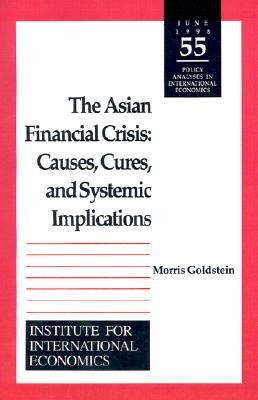
- We will send in 10–14 business days.
- Author: Morris Goldstein
- Publisher: Peterson Institute for International Economics
- ISBN-10: 088132261X
- ISBN-13: 9780881322613
- Format: 15.3 x 22.9 x 0.7 cm, minkšti viršeliai
- Language: English
- SAVE -10% with code: EXTRA
Reviews
Description
The turmoil that rocked Asian foreign exchange and equity markets after the middle of 1997 and that spread far afield is the third major currency crisis of the 1990s. Thailand, Indonesia, and South Korea suffered outright recessions in 1998 and forecast growth rates in the rest of emerging Asia are either negative or well below their pre-crisis level. In an effort to contain the crisis, almost $120 billion has been pledged in IMF-led official rescue packages. How could this happen to a group of countries that has been so highly regarded in the 1990s by private international capital markets? How could the crisis be overcome and what changes are necessary to prevent it from happening again? Morris Goldstein provides the answers to these questions by first explaining how the Asian financial crisis arose and spread. He traces the crisis through its three interrelated origins: financial-sector weaknesses; external-sector problems; and the contagion that spread from Thailand to other countries. Goldstein then outlines what needs to be done in the ASEAN-4 economies, in Japan and China, and in the design of IMF-led official rescue packages to end the crisis. Goldstein's final remarks offer specific proposals for improving the international financial architecture.
EXTRA 10 % discount with code: EXTRA
The promotion ends in 22d.03:29:46
The discount code is valid when purchasing from 10 €. Discounts do not stack.
- Author: Morris Goldstein
- Publisher: Peterson Institute for International Economics
- ISBN-10: 088132261X
- ISBN-13: 9780881322613
- Format: 15.3 x 22.9 x 0.7 cm, minkšti viršeliai
- Language: English English
The turmoil that rocked Asian foreign exchange and equity markets after the middle of 1997 and that spread far afield is the third major currency crisis of the 1990s. Thailand, Indonesia, and South Korea suffered outright recessions in 1998 and forecast growth rates in the rest of emerging Asia are either negative or well below their pre-crisis level. In an effort to contain the crisis, almost $120 billion has been pledged in IMF-led official rescue packages. How could this happen to a group of countries that has been so highly regarded in the 1990s by private international capital markets? How could the crisis be overcome and what changes are necessary to prevent it from happening again? Morris Goldstein provides the answers to these questions by first explaining how the Asian financial crisis arose and spread. He traces the crisis through its three interrelated origins: financial-sector weaknesses; external-sector problems; and the contagion that spread from Thailand to other countries. Goldstein then outlines what needs to be done in the ASEAN-4 economies, in Japan and China, and in the design of IMF-led official rescue packages to end the crisis. Goldstein's final remarks offer specific proposals for improving the international financial architecture.


Reviews